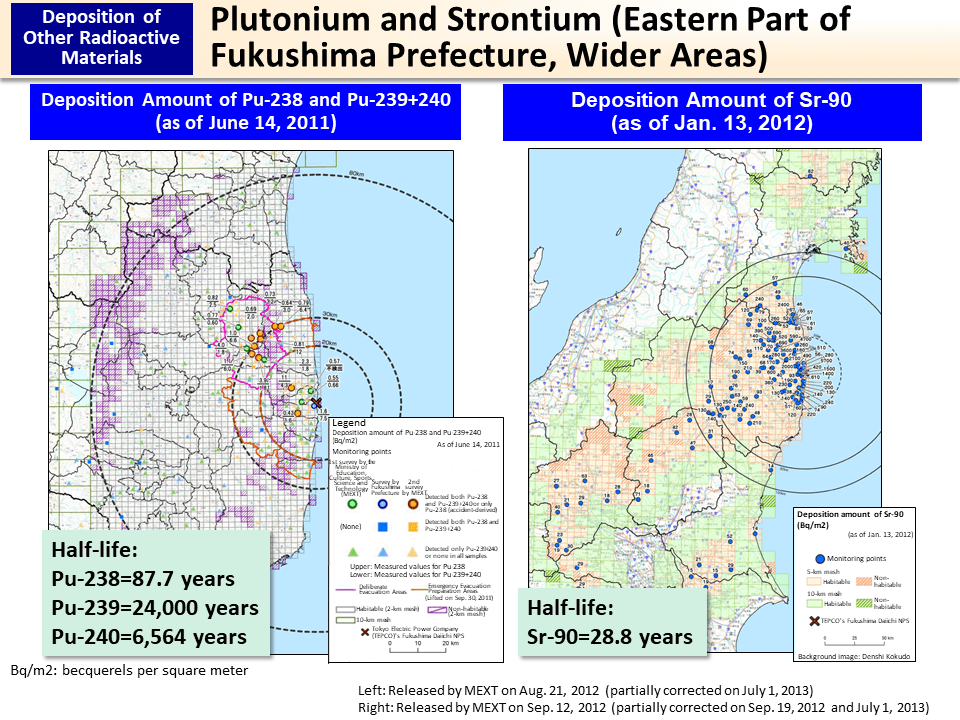Plutonium and Strontium
(Eastern Part of Fukushima Prefecture, Wider Areas)
In the soil surveys conducted by the national government in June 2011 and January 2012, soil samples were collected within the 100-km zone of TEPCO's Fukushima Daiichi NPS and in the western part of Fukushima Prefecture outside this zone.
The amounts of deposited Pu-238 and Pu-239+240 detected in the surveys were found to be within their ranges in past measurements conducted from FY1999 to FY2009, before the accident, covering the whole nation. It means that the amounts were within the fluctuations due to past nuclear bomb tests in the atmosphere, except for the amount of Pu-238 detected in a sample collected at one location (p.176 of Vol. 1, "Effects of Nuclear Test Fallout (Japan)").
The amount of Pu-238 detected in a sample collected at one location exceeded the maximum deposition amount before the accident. It was around 1.4 times the maximum level before the accident. Based on the distribution of ratios between deposited Pu-238 and Pu-239+240 measured nationwide for 11 years from FY1999 to FY2009, locations where the ratios between Pu-238 and Pu-239+240 measured in the current surveys exceeded 0.053 were marked with ○ on the map. They are considered to be locations where the increased deposition amounts of Pu-238 and Pu-239+240 are highly likely to be attributable to the accident at TEPCO's Fukushima Daiichi NPS.
Sr-90 was also detected in the current surveys, but measured values for all samples were within the fluctuations due to past nuclear tests in the atmosphere in comparison with the readings of the nationwide measurements conducted from FY1999 to FY2009 before the accident at TEPCO's Fukushima Daiichi NPS. It was also confirmed that the deposition amounts of detected Sr-90 were around one-thousandth of those of Cs-137 at many of the monitoring points in the current surveys. Only occasionally, the deposition amounts of Sr-90 showed some fluctuations, being around one-tenth of those of Cs-137.
- Included in this reference material on March 31, 2013
- Updated on February 28, 2018

